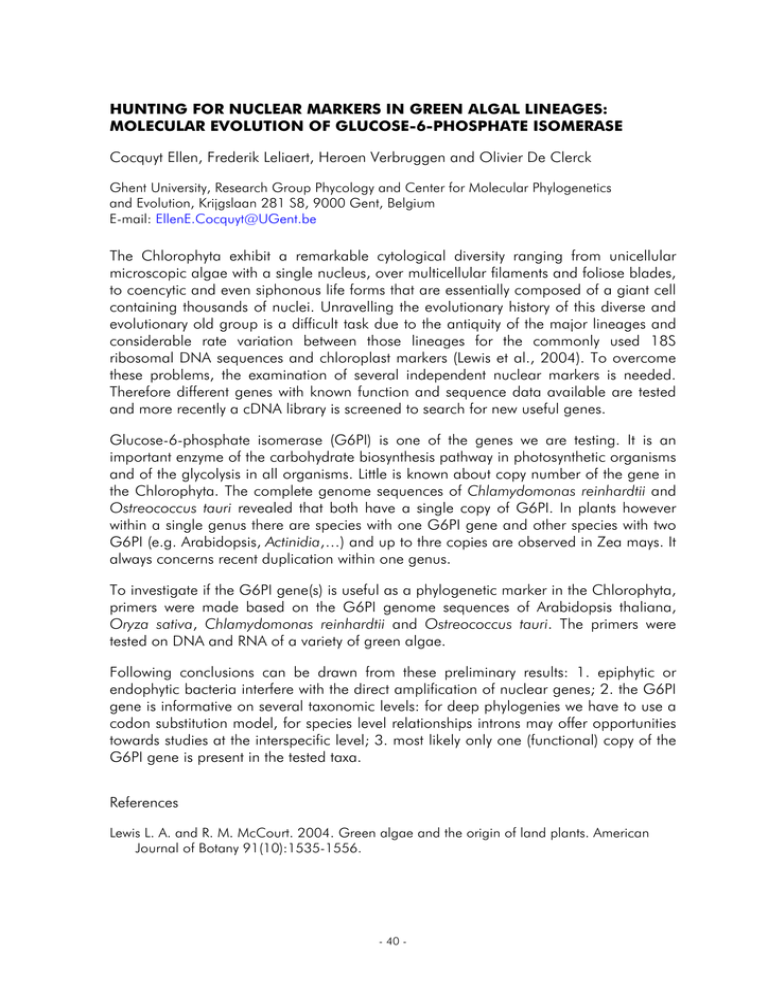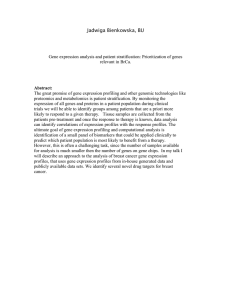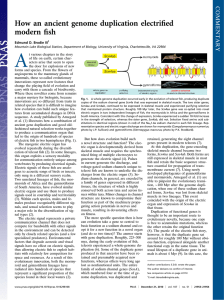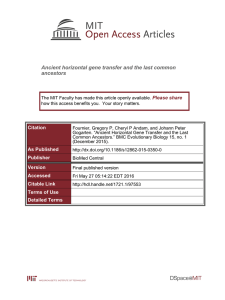HUNTING FOR NUCLEAR MARKERS IN GREEN ALGAL LINEAGES:
advertisement

HUNTING FOR NUCLEAR MARKERS IN GREEN ALGAL LINEAGES: MOLECULAR EVOLUTION OF GLUCOSE-6-PHOSPHATE ISOMERASE Cocquyt Ellen, Frederik Leliaert, Heroen Verbruggen and Olivier De Clerck Ghent University, Research Group Phycology and Center for Molecular Phylogenetics and Evolution, Krijgslaan 281 S8, 9000 Gent, Belgium E-mail: EllenE.Cocquyt@UGent.be The Chlorophyta exhibit a remarkable cytological diversity ranging from unicellular microscopic algae with a single nucleus, over multicellular filaments and foliose blades, to coencytic and even siphonous life forms that are essentially composed of a giant cell containing thousands of nuclei. Unravelling the evolutionary history of this diverse and evolutionary old group is a difficult task due to the antiquity of the major lineages and considerable rate variation between those lineages for the commonly used 18S ribosomal DNA sequences and chloroplast markers (Lewis et al., 2004). To overcome these problems, the examination of several independent nuclear markers is needed. Therefore different genes with known function and sequence data available are tested and more recently a cDNA library is screened to search for new useful genes. Glucose-6-phosphate isomerase (G6PI) is one of the genes we are testing. It is an important enzyme of the carbohydrate biosynthesis pathway in photosynthetic organisms and of the glycolysis in all organisms. Little is known about copy number of the gene in the Chlorophyta. The complete genome sequences of Chlamydomonas reinhardtii and Ostreococcus tauri revealed that both have a single copy of G6PI. In plants however within a single genus there are species with one G6PI gene and other species with two G6PI (e.g. Arabidopsis, Actinidia,…) and up to thre copies are observed in Zea mays. It always concerns recent duplication within one genus. To investigate if the G6PI gene(s) is useful as a phylogenetic marker in the Chlorophyta, primers were made based on the G6PI genome sequences of Arabidopsis thaliana, Oryza sativa, Chlamydomonas reinhardtii and Ostreococcus tauri. The primers were tested on DNA and RNA of a variety of green algae. Following conclusions can be drawn from these preliminary results: 1. epiphytic or endophytic bacteria interfere with the direct amplification of nuclear genes; 2. the G6PI gene is informative on several taxonomic levels: for deep phylogenies we have to use a codon substitution model, for species level relationships introns may offer opportunities towards studies at the interspecific level; 3. most likely only one (functional) copy of the G6PI gene is present in the tested taxa. References Lewis L. A. and R. M. McCourt. 2004. Green algae and the origin of land plants. American Journal of Botany 91(10):1535-1556. - 40 -










